Professor Emeritus David Wolfe is Making A Difference in South Africa
April 21, 2020
Several years ago, Professor Emeritus and former department chair David Wolfe started a science teacher training program in South Africa. This has proven to be very successful but there is so much more to do. David has written a summary of the whole story (here), and I think you will find it very worthwhile reading. -- Richard Rand
"We need this desperately": Making a Difference as a Physics Teacher in South Africa
By David Wolfe
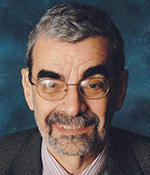 I left UNM in December 2000 on a 6 month sabbatical to London, partly occasioned by the birth there of my first grandchild. London was such a fantastic city, with such cultural advantages, that I could not bear to leave. I resigned from UNM where I had been teaching for some 30 years, and decided to make London my home. As September approached, however, I greatly missed teaching and started looking around for positions.
I left UNM in December 2000 on a 6 month sabbatical to London, partly occasioned by the birth there of my first grandchild. London was such a fantastic city, with such cultural advantages, that I could not bear to leave. I resigned from UNM where I had been teaching for some 30 years, and decided to make London my home. As September approached, however, I greatly missed teaching and started looking around for positions.
And then September 11, 2001 occurred and the world changed.
The death of one British man in New York left a position open at a local high school and I thought it might be interesting to try teaching at that level. And such teaching is quite a change from working at a university. But I did enjoy it and continued for quite some time.
My deep interest in encouraging more young women to study physics led me to an all-girls school where I met and became good friends with the father of one of the girls. Through him I was introduced to Cape Town in South Africa, a country I had never previously visited.
I met the Head of Physics at the University of Cape Town, certainly one of the best such institutions on the continent. And so I started teaching at the Summer School they run in January 2002.
This is not the usual such student Summer School but is, rather, aimed at an older clientele and teaches general courses of broad interest for two to three weeks every year. They had never really done any science courses, and I introduced the first science course for non-specialists, which proved remarkably popular.
Since then I have taught there for the past 13 years, in physics, history, and music. I spend 3 months each year which gives me two summers per year, one January through March in the southern hemisphere and the other June through August up north.
Through my connections with the Physics Department, I stated teaching during the regular term as well, as the university was in transition and opening to a large influx of black students.
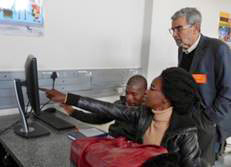 The terms, black, coloured, and white are perfectly acceptable in South Africa. Coloured is used for a group of people, largely descended from some of the original Koi-San peoples, mixed with an influx of Malaysians and other races. They exist largely in the Western Cape region, mostly around Cape Town.
The terms, black, coloured, and white are perfectly acceptable in South Africa. Coloured is used for a group of people, largely descended from some of the original Koi-San peoples, mixed with an influx of Malaysians and other races. They exist largely in the Western Cape region, mostly around Cape Town.
These black and coloured youngsters came from schools where they were not well educated and need extra help to succeed at university. I taught classes of 75 or so of such students for six weeks every Autumn (in the southern hemisphere). We did E & M with a lecture every day and a laboratory or tutorial session every week. These were very clever youngsters and did quite well with this extra boost. But their poor preparation from secondary school led me to investigate what the problems were there.
When I first came to the UK, I became involved with the Institute of Physics (IOP) the professional organisation of our profession. I worked in their Diversity Programme and with their efforts to include more women and ethnic minorities to physics programmes. IOP was running educational programmes called IOP in Africa, then working in nine countries. Financial difficulties led them to stop programmes in most countries, but I worked to prevent that in South Africa. IOP is now involved only in Tanzania and South Africa.
The problem in secondary schools lies with the poor preparation of teachers. During the apartheid era (1948-1990s), black people were denied any sort of scientific or technical education or really much decent education of any kind.
Thus, there were basically no black teachers trained either in physics or chemistry, subjects which are taught together under the rubric of Physical Science.
Even now, twenty-five years after independence, some teachers have some chemistry training but very few have any physics education at all in teachers colleges. Physical Science is taught in grades 10, 11, and 12.
We decided that working with teachers was a much more efficient way of reaching large numbers of learners, as students are called in South Africa, and so we started a series of workshops in Soweto a township just outside Johannesburg. I ran these with a South African colleague, Case Rijsdijk and, after a few years we found two fine young men from UJ to do some of this work. I believe these workshops are helpful as I try to bring both interesting physics material to the teachers but also some new and innovative methods of reaching the youngsters.
There has been a great deal of research into better teaching methods for physics during the past thirty years and I hope we can take advantage of it. I use much of the multiple-choice questions method developed primarily by Eric Mazur, but also with much material from the groups of Joe Redish, Lillian McDermott, and others.
The reception from the teachers involved has been overwhelmingly positive and attendance is always high. Given the experience these people and their families have borne under the previous apartheid regime, the warm reception I’ve received speaks to the enormous level of kindness and generosity amongst them.
The entire educational effort is run by the South African Institute of Physics (SAIP), in conjunction with the British IOP. The SAIP Physics for Development Foundation, with charitable status, is the fundraising arm and is focused on seeking donor partners to improve the quality of maths and science education in South Africa.
Education in South Africa is in crisis. According to Africa Check, at least 75% of schools are not able to impart the necessary skills to learners. Many teachers were not adequately educated as the apartheid legacy in education lives on with the poor still receiving inadequate education, according to education expert, Graeme Bloch.
- In 1953, finances for schools were separated on racial lines, with black children receiving significantly less
- In 1976, state spend on a white pupil was 15 times that of a black pupil
- There was a shortage of black teachers, and many were under-qualified
- By 1961, only 10% of black teachers held a matriculation certificate, indicating successful graduation from secondary school
Numerous initiatives have attempted to address the poor education that many teachers received under apartheid. Billions of Rands have been spent on this crisis from as far back as the late 1980s.
- South African universities continue to have a shocking national average graduation rate of 25%.
- Only about 14% of those that do finish and take the school leavers’ matriculation exam, pass at a level high enough to gain entrance to universities in the country.
- The exams in maths and physical science (combined physics and chemistry) yield the poorest results, well under 10% of students who began schooling.
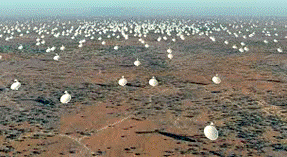 Our goal is to improve teaching capacity, leading to higher pass rates in the sciences and an increase in human capital in Science, Engineering and Technology (SET) – a strategic priority for the fulfilment of societal and economic needs in the country. This is incredibly important as South Africa is the major home to the largest astronomy project on earth, in the Square Kilometre Array, the SKA.
Our goal is to improve teaching capacity, leading to higher pass rates in the sciences and an increase in human capital in Science, Engineering and Technology (SET) – a strategic priority for the fulfilment of societal and economic needs in the country. This is incredibly important as South Africa is the major home to the largest astronomy project on earth, in the Square Kilometre Array, the SKA.
Without trained scientists, computer experts, and engineers, South Africans will be unable to participate in this enormous project in their own country.
We ran our first workshop in July 2013 at the University of Johannesburg Campus in Soweto which has a Science Centre on campus, the Soweto Science Centre (SSC).
These water towers are directly opposite the campus and marvellously decorated. The bridge between them is used by bungee jumpers on weekends.
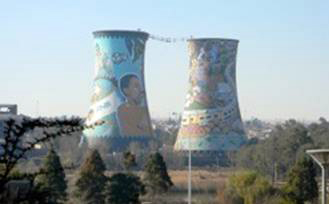 By July 2014, we had 600 teachers come for three days of instruction, a total of about 20 hours.
By July 2014, we had 600 teachers come for three days of instruction, a total of about 20 hours.
Of these about 400 were taught maths by a group of four teachers, while my colleague Case Rijsdijk and I taught the remaining 200 teachers in physics. The subjects covered in these 20 hours were static electricity and electrical circuits.
Student tutors were there to help individual teachers with questions and to be sure that the two physics lecturers went at a speed consistent with the knowledge of the teachers. Extensive surveys at the end of the course were run. They were overwhelmingly enthusiastic.
Besides general gratitude for the material covered, there were requests to extend the work to chemistry and to spread it throughout the country. “We need this desperately,” was the most common comment. At the end of the workshop, the Minister of the government’s Department of Science and Technology, Naledi Pandor, gave a speech to the 600 teachers and staff and was extremely enthusiastic about this work and its necessity.
Following the work in Soweto, I then started in Eastern Cape, just outside Port Elizabeth in the very south of the country, on the Indian Ocean coast. We started a third series of workshops in Limpopo, the province farthest north, bordering on Zimbabwe. And last year we started a fourth series in Richards Bay, in the province of Kwa-Zulu Natal, the eastern part of the country, again on the Indian Ocean coast. Thus we are now established in four of the nine provinces.
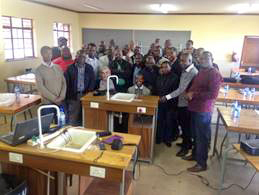
Workshop in Limpopo province
South Africa is a wonderful country, blessed with clever and industrious people, rich in natural resources and physical beauty, and with significant infrastructure in roads and electricity network. The educational situation in South Africa is, however, not good at all. It has fared very poorly in various international tests and has, in consequence, withdrawn from the Trends in International Mathematics and Science Study (TIMMS) programme.
It has also shown poorly in surveys conducted by the World Economic Forum which are, however, somewhat less scientific. Studies by the Cambridge International Examinations body emphasised that most education relies on rote memorisation and not on critical thinking.
The Australian Board of Studies (New South Wales) stressed that “The cognitive levels assessed in the (matric) examination questions are heavily weighted towards lower-order skills.”
The source of the problem lies with teaching, not with the teachers. The teachers I have met have been enthusiastic, dedicated and hard working. The problem is that they have not been decently educated, in physics in particular.
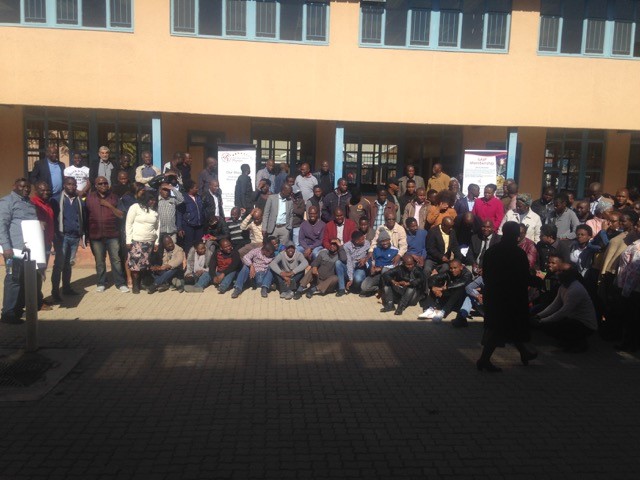
Group Photo of Limpopo workshop province
It makes a great deal more sense to train teachers than to train students. For each teacher who learns more physics, several hundred students will benefit. That is, if the teachers really use what they learn in workshops in their classrooms when they return to school. This is the key question.
Even though programmes in teacher training in various subjects (mostly maths and english) have been run in the past, no measurement of outcomes has ever been made. Our programme is designed to change this.
One of the major problems in the past has been finding funding to support this work. It is easy enough for Case Rijsdijk and I to volunteer but we are old and cannot continue forever, and then to expand the programme. We need young South Africans, trained in physics at university and graduate school to take over and to be paid. And, just within the past few months, such funding appears to be coming. And the story is heart-warning and, perhaps, unique to education.
One of the students whom I taught at UCT was a young Zulu man, Vusi Mngomezulu. He had been a star pupil at his local township school but shocked when he got to university and realised his background in science and maths was poor.
He was placed in one of the classes I taught where he was one of the hardest working students I’ve ever encountered there. He did so outstandingly well that he won a Fulbright scholarship to attend U. Missouri and graduated at a high level. His field was computer science and he got a position with the Allan Gray financial company, the largest in the country. He has done extremely well there and has travelled to Europe and the US with them. We have become quite good friends since his graduation.
Allan Gray has a charitable arm and Vusi put our effort forward for a grant which they have given us. The amount was quite large by SA standards. We plan to use this to hire several young people train them in some of the more modern teaching techniques and have them take over the work in the four provinces where we are now involved.
Then, in the near future, we hope to acquire further funding and expand the programme to the five remaining provinces and many new locations throughout the country.
The future will, we hope, be much brighter for science education in this remarkably beautiful country.
